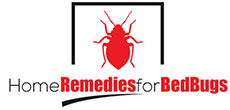One out of five Americans had suffered an infestation of bed bugs in their homes or for even trying to get rid of bed bugs! The regeneration of bed bugs in the 21st Century has hoisted consciousness of the insects and increased awareness on how to eradicate an infestation of bed bugs
 Lots of people are still uncertain as to how to get rid of bed bugs and see if it is probable to abolish an infestation of bed bugs even without the help of experts. Here are the 3 effective measures that you can apply to help you with these concerns.
Lots of people are still uncertain as to how to get rid of bed bugs and see if it is probable to abolish an infestation of bed bugs even without the help of experts. Here are the 3 effective measures that you can apply to help you with these concerns.
- Home remedies to get rid of bed bugs
Most of the people distressed by bed bugs have been bitten while sleeping because the bed is bug-ridden. Bed bugs usually find haven alongside the mattress piping. Proof of several life stages can be discovered in this particular spot, along with dark staining from excrement. Bed bugs transform from eggs through nymphs to adult stages, from 1 to 5 mm through 5 development stages, requiring a meal of blood prior to each stage.
It is achievable to control a bed bug infestation, but keep in mind these 3 key factors that make this feat predominantly challenging:
- There is rampant resistance to current pesticides
- Lack of potent pesticides
- Bed bugs are difficult to find because they can fit in tiny places or even crevices to hide.
Bedding should be disposed or soaked in hot water for 30 minutes. Let it dry at high temperature for at least 30 minutes.
Discarded furniture should be considered as infested with bed bugs and should not be allowed to be used by others.
Use of vacuum cleaner is a helpful finishing way of clearing away the residual bed bugs and even the tiny eggs. However, deeply seated bed bugs may escape this procedure. Use a vacuum cleaner that allows discarding outside and directly into a sealable plastic bag.
Another method to get rid of infestation is secluding
the bed and tracking bed bugs in traps.
Interceptor traps may be utilized to isolate the bed and catch bed bugs on their way from their hiding places toward the host on the bed. Bed bugs cannot fly; they can only crawl, so they may be caught in a trap on their way up the legs of the bed.
Moat-style traps are available in the market but can also be prepared definitely at home. The concept is that the trap was designed so that bed bugs can easily climb the external plate but the other side and internal plate is slippery, making it unlikely for the bugs to escape.
Bed bugs typically crawl on surfaces such as walls and floors. Keeping the bed from touching the walls and making sure that bed linen does not come in contact with the floor helps to keep the pests at bay.
Another key factor to secluding the bed from bugs is to cover the mattress and box spring with a fabric that traps bed bugs inside and blocks entry from outside. This technique is widely known as “encasement”. Zippered sheets are accessible in the market and are intended to be applied with this purpose. The price of these commercially offered products is substantially lower than the price of a replacement mattress. Zippered sheets should be replaced every year.
Encasement gets rid of hiding spots which makes it easier to find bed bugs, thus aiding to avoid infestations of new beddings.
Extreme heat and cold are also known to get rid of bed bugs. Temperature of 45°C (113°F) kills all stages of bed bugs. At temperatures exceeding 60°C (140°F), all bed bugs are killed immediately.
Steam applied directly can be a powerful mechanism against bed bugs. But this method causes a threat of dispersing an infestation because bed bugs will search for cooler spaces in the room outside the range of the heat.
Bed bugs can also be killed by cold temperatures. However, it needs temperatures under -18°C (0°F) for 4 days in order for the low temperature to pass through anything and kill all the bugs and eggs. Tinier objects may be placed in a fittingly cold freezer and should be kept there for 4 days.
Gas systems devised for immediate freezing are unsuccessful and may increase an infestation because they just puff the bugs away with the use of high air pressure.
Attempting to wipe out a bed bug infestation by shutting off heating and leaving doors and windows open is not a successful tactic and may absolutely cause structural destruction to a property. Abandoning a room for more than a year can be efficient for getting rid of bed bugs because this strips them of food; however, they may easily transfer to a neighboring property and come back soon after.
- Use of pesticides
If professionals are being hired to eliminate a bed bug infestation, they may employ the use pesticides after applying nonchemical procedures. Various insecticides must be administered by licensed professionals.
There are around 300 pesticide products registered for eliminating bed bug infestations. Listed below are the major chemical classes:
- Pyrethins and pyrethroids are the most widely used insecticides for bed bug remedy. Pyrethins are obtained from chrysanthemum flowers, pyrethroids on the other hand, are the artificial equivalent. They work on the nervous system of the bed bugs, but several bed bugs have become defiant to these chemicals.
- Silicates like diatomaceous earth dust (DED) work by damaging the bed bugs’ lustrous, protective external shell until dehydration kills them. The outcomes are not neurochemical, it is physical so bed bugs cannot become unyielding to these products.
- Insect growth regulators (IGRs) such as (S)-methoprene, hydropene, are insecticides that depend on the insects taking in blood before they function. This alone makes them an unappealing alternative.
- Bendiocarb and propoxur known generally as Carbamates, are more efficient than pyrethins and pyrethroids, but events of resistance are turning up.
- Organophosphates is no longer being used today
- Neonicotinoids such as imidacloprid, have been discovered to create no resistance from bugs and are effective, however they don’t have residual effect.
- Pyrroles are incredibly slow-acting with restricted effectiveness. They have however, no issues on resistance. Chlorfenapyr is the only pyrrole bed bug insecticide registered in the U.S.
Pyrethins and pyrethroids are widely considered to be inefficient against new bed bug breeds, and there is no distinct cost in the bedding fabrics retailed as being permeated with these chemicals.
Desiccants like DEDs are effective choices against bed bugs and have some advantages which includes:
- Extended shelf life
- Low toxicity to animals
- Extended residual life
- Low chance of resistance
- Effective as a prophylactic pesticide.
The approach of pesticide utilization is an essential concern. Consider the fact that the products must make direct contact with the insects to take effect.
On the other hand, bug bombs, space sprays, release foggers, and incendiary smoke generators are not regarded to be effective. These products fall short to draw the pesticides into the gaps and crevices that accommodate bed bugs. They also usually include pyrethroids, which have an overflowing effect that could disseminate the infestation.
- Hiring Professional help for getting rid of bed bugs
Perhaps the most efficient approach to permanently get rid of bed bug infestation is to employ a Pest Management Professional (PMP), commonly known as an “exterminator”. If you attempt to deal with bed bugs on your own, you are likely to be unsuccessful. If you plan to hire for a PMP, it is best to do some research and look for a good company. You should always strive for the best quality of service.
How to Find a Pest Management Professional (PMP)
- Go to www.pestworld.org, the official website of the National Pest Management Association; use the “Find a pro” section to search for a PMP that works in your area.
- Look in phonebook Yellow Pages under “Pest”; get recommendations from friends or neighbors.
Standard procedures are applicable for use by the industry. The pest control method is described in the following steps:
- Checking the infestation by diagnosing the pest either by actually seeing them or through evidence like eggs and shed skins
- Highly trained dogs can be employed to track down bed bug smell
- Inspection to establish the places needing treatment which also includes neighboring areas in hotels
- Non-chemical control with application of pesticide, various chemicals may only be administered by professionals
- Reassessment of the treatment program’s effectiveness
- Precautionary measures.
Professional exterminator who performs IPM techniques can present the safest and most advanced technology to effectively heal infestations. If the treatment plan involves the use of toxic chemicals, it is typically safer for residents to have them administered by a trained professional.
Trained professionals have access to insecticides that are more potent likewise a more practical technology that customers cannot acquire. These elements should all be precisely regarded before concluding on how to carefully and successfully get rid of the infestation.
If opting to rent a professional exterminator, they can give an efficient treatment that can be finished within a few hours. Trained professionals are ardent on locating where the bugs harbor and also apply professional strength insecticides together with advanced technology to wipe out the pests right away.
They also will distinguish if the bedding or mattress can still be treated or discarded, based on the degree of infestation. Mattresses that have cuts and holes in them are usually cannot be treated and will require immediate replacement.
Exterminators will also conduct a follow-up appointment to re-inspect and re-evaluate the area. They will redo the treatment if needed. Adjacent rooms are also examined and treated if they found remaining bugs. If this is the case, it is usually better to hire a professional exterminator who can execute the appropriate procedures to rapidly and effectively treat the infected rooms.
As explained before, bed bugs can survive up to a year even without food as long as they remain in their hiding places. With the absence of a professional inspection and treatment, the occupants may realize that their methods fail after a few months, forcing them perform the methods over and over again.




